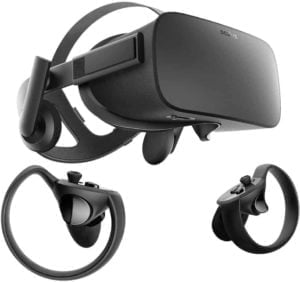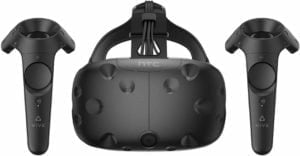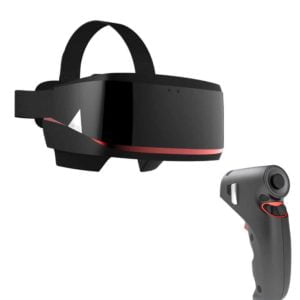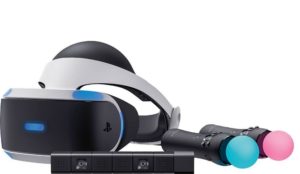Video gaming has been around now for over 40 years and it has seen some incredible advances in the technology employed and the experiences those playing video games enjoy. You may be old enough to remember the simple ‘ping pong’ games of the 1970s which basically involved ‘hitting’ a white dot back and forth. I think everyone will agree the journey from that era to now has been epic.
From the white dot, we move forward to the 1980s when we had what were the first games with proper graphics and color, namely Space Invaders from the Japanese company, Taito, and from their compatriots Namco we had Pac-Man. In the late 1980s we were introduced to the Super Mario Brothers who put Nintendo on the map; yes, they are Japanese too! As the 1990s dawned, we saw a rival ‘character’ coming up against the Mario Bros. as we met Sonic the Hedgehog, who was created by Sega. Unsurprisingly they are yet another Japanese games company.
You must have gathered at this point that the major players in the gaming world were Japanese companies, who pretty much dominated the field throughout the 1970s, 1980s and 1990s. So would the new millennium break that stranglehold?
In was to a degree with Microsoft introducing the X-Box gaming console in 2001, but generally, the Japanese companies still dominated the gaming console market. Sony had their PlayStation, Nintendo had the Wii and Game Boy. At least there was more competition and choice for consumers, so everyone had to raise their game (awful pun, I know).
The 2000s saw games become rawer in terms of content to the extent that some were rated ’18’ certificate in the same way that movies are classified. Titles such as ‘Assassin’s Creed’, ‘Grand Theft Auto’ and ‘Call of Duty’ meant there was no shortage of blood and gore in the gaming world, although if you preferred a more sedate gaming experience you could always play ‘The Sims’.
However, no matter what console you were using or what game you played they all basically offered the same experience of looking at a flat screen and interacting via your controller. Fun though that might have been, the gaming companies yearned to offer their customers a greater experience.
The pursuit of maximum player interaction and cutting-edge graphics continued and as we moved into the current decade we are now at the stage where virtual reality gaming has arrived.
This is probably the biggest leap in technology the gaming industry has ever seen, and whilst basically in its infancy, there is already a steady stream of consoles, upgrades, games, and headsets available for enthusiasts to experience this exciting new gaming concept.
The difference virtual reality makes is that instead of effectively being an onlooker simply watching the screen, players can now go ‘inside’ the game and actually be a part of it. You are to all intents and purposes going through what would have been your gaming monitor and joining the characters in your game. If you have ever seen the movie ‘Last Action Hero’ when Danny Madigan goes to the movie theater and uses a special ticket to join his hero, Arnold Schwarzenegger ‘in the movie’ you’ll get the idea.
Virtual reality gaming offers you the opportunity to turn around and zap the alien as he creeps up behind you, climb a rock face and see the tiny crevices you need to grip on to, literally in front of your eyes. How does a sword fight grab you, where you literally have to hold you shield in front of you to protect yourself? These are a tiny fraction of the possible scenarios that you could experience, and if truth be told the potential for many more is unlimited.
To experience any of the fun that virtual reality gaming can offer there is one piece of equipment that you are going to need. That piece of equipment is a Virtual Reality Headset. These headsets, along with some of the accessories that accompany them, are the ‘looking glass’ through which you will go to enter your virtual reality world.
They all have some common features such as a mounted display, audio output, and tracking sensors, but whilst these are common they do not all operate in exactly the same way. There are differences in specifications, set up procedures and requirements. Plus, not all of them offer the same virtual reality experience due to variations in their features and technology.
So with all these differences I am sure you are asking, ‘What do I need to know about virtual reality headsets?’, ‘What are the most important features?’ and ‘What differences do I need to look out for?’. Well, I am going to answer all these questions and more.
To follow is a brief outline of what virtual reality headsets are all about, the features they may or may not have, and what you need to consider before purchasing one. You will also be able to read my reviews of a few of the most popular virtual reality headsets currently on the market, and what the differences are between them. My hope is that you learn what virtual reality headsets can add to your gaming experience, and become confident that you are making the correct purchasing decision. So without further ado let’s get started…
What to look for when choosing a Virtual Reality headset?
Display
The visual element of virtual reality plays a massive role in making the whole experience a positive one, so it is something that needs particular thought before choosing. Without being too technical, generally you will find the display units are ‘OLEDs’ which stands for ‘Organic Light Emitting Diode’. The OLED display will normally have two screens (one for each eye) and offer exceptional image clarity, color, and contrast. Look out for the display resolution which should at least be 1080 x 1200 for each individual display.
Other factors such as image refresh rate should be assessed and here you are looking for between 90 and 150 Hz if possible. This determines how quickly the image changes and moves as you do whilst playing, so the faster the better. The field of vision angle is also important as this determines how wide the scene you are viewing goes in terms of your own field of vision. We want to avoid scenes cut off at the edges so the higher the better and generally anything over 100 degrees is desirable.
Audio
We often think of virtual reality as a purely visual experience but in all cases, audio is vitally important in making each gaming scene as real as possible. Again there are differences in sound quality, the specifics of how the audio is produced and also what earpieces are provided. Generally, this will involve ear buds, ear pads, or in some cases, you are provided with both in order to choose the one you prefer.
In terms of the audio quality, there are differences here too. The top models give a truly spatial audio experience. This means that when you are playing and for example something explodes some distance away, the audio software will create the sound of the explosion at a level equivalent to that distance. Therefore, if the explosion happens a few feet away, prepare to have your ears filled with the sound of a loud bang!
I believe finding the best quality audio is vital for one to experience the most from virtual reality gaming so check out what each headset has to offer in terms of sound effects and quality.
Set Up
Remember as a kid, your dad trying to set up the more technical of your Christmas or birthday presents? He’d likely throw away the instruction manual provided, and then be left with a few spare parts or wires at the end. Well, setting up virtual reality headsets doesn’t require a PhD, but I strongly advise that you consider the set process before purchasing. They are ALL relatively straightforward so don’t be put off but do be aware that there are variations such as the number of wires and connections required, wireless options, and where certain sensors need to be placed.
The one piece of advice I’d definitely ask you to follow is not to do what your dear old Dad did. Always follow the set-up instruction manual. You will find most of the manufacturers have excellent online support for helping you not only with the set up but also with many other topics related to your virtual reality headset.
Accessories Required
One thing I ALWAYS check before buying any product is what additional items (if any) it will require, and what extras are available that would add to the performance of the product. With virtual reality headsets this varies massively so please have a thorough examination of this. There are some headsets that you can use right out the box, there are one or two that require you to buy additional products to use in conjunction with the game consoles. There are others that are complete, but the addition of one or two extras take them to another level.
Comfort / Weight of headset
One key element you must remember is that when playing a virtual reality game, you will be wearing the headset at all times. This might seem the most obvious statement ever, but I know a number of people who didn’t factor this into their selection. The differences in weight, head size adjustment, the strapping, and the connection type must all be considered.
With regards to the weight of the headset, bear in mind with certain games, especially those that are ‘addictive’ you could be wearing the headset for some time. I have a friend who spent two hours fighting all manner of creatures and admitted me, ‘I forgot I was playing a game’. Thankfully he is a big old lump, and his neck muscles were able to cope with that length of time wearing a headset, but this might not be the case for everyone.
This is important because there are large variations in the weight of virtual reality headsets ranging from just over 300 grams to over 600 grams. For an adult, this might not matter, but when you consider that young children could be playing these games, you need to be aware of the strains and stress on their neck muscles, especially if they are playing for long periods of time.
Another element of the use of the headset is how it is held on to your head and also how comfortable it feels. Some headsets employ a very simple webbing strap and velcro set-up, which is effective. Others use a more advanced system, which cleverly adjusts itself to fit the size of your head. Once the headset is securely fitted there are differences in how each manufacturer maintains your comfort or not, as the case may be. You can find soft, foam cushioning in one headset, and nothing at all in other. So if comfort is something that is important to you check this before ordering.
One final point is to always ensure the headset is compatible with glasses if these are needed by any of the users. There is no point in having all these great virtual reality scenes available and not being able to see them properly!
In-game play / movement detection
One of the biggest variations in what virtual reality headsets can offer is how the in-game play is actually recreated and subsequently what the experience is like for the player.
The principle of how virtual reality games work is that your headset has sensors which are tracked, and whenever the user moves their head, this movement is replicated in the game visuals in terms of the scene you watching in the display. Whilst this is the same principle for all headsets, how they achieve this varies greatly.
Some headsets require rather a lot of wires and cables all connected together and ultimately to the console, headset, and movement sensors. It is not a problem as such, but compare that to doing most of this wirelessly. The sensor units that track your headset can, for example, operate wirelessly so the issue of where you place them doesn’t arise, as there are no wires to trip over. The ones that have sensor boxes that are plugged in need a bit more thought as to how and where they are going to be positioned.
Controllers
The next element to consider is the controllers or controller if there is only one. Again, there are significant differences between products. Some have a single wired controller similar to what we are used to with the PlayStation, for example. Others are completely wireless and as such, have far more flexibility when you need to move them as they are not restricted by an attached wire. The layout of the controller is also something to consider. They vary from basic to ergonomically designed that fit your hand and fingers perfectly.
Another huge difference in terms of playing virtual reality games is whether you need to sit or stand in one location, or if the headset’s technology allows you to move freely. No prizes for guessing which of the two is more desirable, but as with most products, the higher the specification the higher the price.
Pricing
Ultimately no matter how good a product is, how high a specification we require, or simply how much we desire something it can basically boil down to the budget we are prepared to spend. Within the world of virtual reality headsets, there are large price differences of up to several hundred dollars. This is even wider when additional or upgraded accessories and extras are added to the whole ensemble.
Whether you have a limited budget or not whichever virtual reality headset you buy will definitely give you a gaming experience like no other you have had previously. As you read through my reviews you will see the factors mentioned above addressed and discussed. As always I will give my top recommendation at the end, but of course, you are free to choose as you wish.
Oculus Rift Virtual Reality Headset

Ask anyone who knows anything about Virtual Reality equipment to name a product in this niche and a large proportion will undoubtedly say ‘Oculus Rift Headset’. It was one of the first fully functional VR headsets to be released in the market and has set a pretty high bar for the others that have followed to try and compete against.
The design of the headset is basic and uncomplicated, which I like. With a new technology like Virtual Reality, there is a danger that ‘new’ players get put off before they even start by seeing equipment that looks like a year’s training at NASA would be required to understand it. Of course, the headset looks different, which is going to be the case due to the innovative nature of this new technology however, by keeping the design as simple as possible it feels as natural to put the fully adjustable headset on as it would with normal headphones. The headset secures to your head with a simple three strap fastener and still feels comfortable even after long use.
In addition, setting the Oculus Rift up for use with your computer or gaming box is a lot easier than you might expect. All that is required is connection to the USB and HDMI sockets. Should you need help setting up, Oculus have a very useful website that will take you through the process step by step.
The sound provided via the headset earphones has a very high quality and the effects go a long way to making the scene you are in feel even more real thanks to the Oculus Rift’s integrated VR audio system. This gives a real spatial effect in the sense that the ‘closer’ you are to an object within the gaming scene the louder it seems and of course if it ‘moves’ further away it gets quieter. Depending on what you find most comfortable, you have a choice of earbuds or ear pads, although I found the earbuds to give the best effect during game play.
Where the Oculus Rift really produces that ‘wow’ factor is the graphics within your virtual reality scene. If ever it were possible to genuinely make you feel you were really standing within a virtual world, then the graphic recreation that the Rift produces gets it almost spot on. The images are displayed on two 1080 x 1200 resolution lenses at the front of the headset which have a 90 HZ refresh rate. The images are clear and sharp and when the Rift’s sensor picks up that you have turned your head for example, the graphics had very little lag.
The ‘simple is best’ philosophy extends to the remote control unit which is extremely simple and uncomplicated. The Oculus Rift was more or less the first major release of a fully functional VR headset and the danger could have been it didn’t live up to the anticipation or dare I say it, hype. However, it has actually set a standard that other VR headsets will at least need to match if not better in order to compete.
- Get 6 free titles, including: Robo Recall, Luckyʼs Tale, Quill, Medium, Dead and Buried, and Toybox
- Riftʼs ultra-low-latency tracking offers unparalleled immersion
- The Oculus Touch controllers bring your hands into VR, letting you interact naturally with the virtual world
- NVIDIA GTX 1050Ti/AMD Radeon RX 470 or greater Graphics Card Required and a RAM of 8 GB+ RAM
- Windows PC and internet connection required - review recommended specs to confirm system compatibility
HTC Vive VR Headset

The full experience of virtual reality is what the HTC Vive Virtual Reality Headset claims to offer so ever eager to give them a chance to prove it, I decided to put the ‘Vive’ through its paces.
As soon as I took the Vive and its accessories out of the box I had an eager sense of anticipation. This definitely has the look of the future about it with the front of the headset having multiple sensors, two controllers that wouldn’t look out of place as phasors on the next Star Trek movie, and two square motion trackers with their matt black finish completing the classy ensemble. But as we know from testing many products, looks don’t always equal performance so here’s how they performed…
The headset is very comfortable to wear and adjusted to my larger than average head without any difficulty. My friend who wears glasses also tried it and again was able to use it without feeling any discomfort. The total resolution of the viewer is 2160 x 1200 pixels and unlike other virtual reality headsets, the Vive uses a screen aspect ratio of 9:5 rather than 16:9 which is the norm. The image quality was excellent and whilst in game use there was no noticeable lag or flicker.
To augment your virtual reality experience, the headset has a laser position sensor, a gyroscope, and an accelerometer which in combination are used to track your head movements and position. It also has a front facing camera which means you can have your virtual reality world entwined with your real world.
The hand-held controllers really set the VIve apart from its competitors. They are a unique design but on a more practical level when holding them, every button and control are in exactly the correct position. They are wireless so you can move them quickly, freely and without restriction during games. The controllers each have a touchpad and a trigger button which is operated with your forefinger for disposing of even the most persistent of alien foes. The grip is also sensitive to how tightly you are grasping it which is utilized in games where items need to be picked up. The controllers are light and even after a long gaming session there was no sense of tired wrists or sore hands.
Another winning feature is the motion sensors which allow you to move around the room, which not all headsets do. You can either have them fixed to a wall or keep them free to be used in different rooms. You might consider getting stands for them as they need to be 2 meters off the floor to be effective. Each sensor also requires its own separate electrical supply so you are likely to need a multi-socket extension to set everything up.
For me, virtual reality gaming is all about the experience and with the HTC Vive every time I finished using it I genuinely felt I had experienced something special. I love the controllers, but best of all is the ability to move around the room. This is what I believe a virtual reality headset should allow you to do so the Vive wins there too. It is undoubtedly a sizable investment but if you want to get one of the best virtual reality experiences available it is worth paying for.
- Get 6 free titles, including: Robo Recall, Luckyʼs Tale, Quill, Medium, Dead and Buried, and Toybox
- Riftʼs ultra-low-latency tracking offers unparalleled immersion
- The Oculus Touch controllers bring your hands into VR, letting you interact naturally with the virtual world
- NVIDIA GTX 1050Ti/AMD Radeon RX 470 or greater Graphics Card Required and a RAM of 8 GB+ RAM
- Windows PC and internet connection required - review recommended specs to confirm system compatibility
Cooler Master VR Glasses

If you are looking for a virtual reality headset that offers a simple, straightforward experience without all the bells and whistles then the CM VR Virtual Reality Glasses may be the solution you are looking for. It can be used with PCs, laptops, and both the X-Box and PlayStation game consoles
The headset is a simple, uncomplicated affair and is adjusted to fit your head using the webbing strap adjustment. It is not the most sumptuous feeling headset I’ve tried but it was comfortable enough for long use.
The visuals exceeded what I was expecting and proved to be very clear and well focussed throughout. The HD display has a 1920 by 1080 resolution and whilst it may not be the ‘largest 4:3 standard screen in the world’ as they advertise it to be, the effect goes some way towards making it feel that way. Your field of vision whilst viewing is 100 degrees, which certainly gave that IMAX effect whilst I was watching both 2D and 3D movies via the headset.
The sound produced by the headphones is decent enough and when combined with visual effects you do find yourself drawn into the scene you are experiencing. Whether that counts as virtual reality I’m not sure but it is certainly enjoyable.
The headset also incorporates 9 axis tracking technology which tracks your position if you should move. Whether you move backward, forwards, side to side, stand up or sit down this will be detected and movement on the display will be replicated. Obviously, with this being an entry level product in its field, there are headsets with more advanced technology and specifications, however, this did a decent job of creating the effect of movement within the virtual reality game.
Virtual Reality headsets are in their infancy and there are many manufacturers who haven’t even got the blueprint stage, never mind actually produce a product. With the CM VR Virtual Reality Glasses, you are at least able to get a flavor of what is possible and how you might experience virtual reality games. It also has a high-quality display for watching movies and genuinely does well in trying to recreate the best visual experience possible.
This is not going to hit the #1 spot when the ‘pro’ gamers test it out but if you don’t want to spend well over $500 for the leading brands, and instead just want to take virtual reality for a test drive as it were, this product delivers.
- The sharp picture is projected onto your retina through the aspherical lens without distorting the image, allowing every pixel to remain in sharp focus.
- This gives user an IMAX-like experience in the comfort of their own homes.
- With our built-in inertial positional tracking technology, when you take a step in any direction, the game character continues walking in that direction until you take a step back.
- It gives ball park acceleration, which makes you feel like you're really moving, it will lower the possibility of making you dizzy.If you crouch or jump, you character will do the same.
Sony PlayStation Virtual Reality Headset

For our final product review in this series on virtual reality headsets we are going to test out the PlayStation Virtual Reality Headset which you won’t be surprised to learn is designed for use with Sony’s PlayStation Games Console.
The first thing I must point out is that in order to use the headset in conjunction with the console, you will need to purchase a PlayStation camera. Further to this, for the maximum virtual reality experience the PlayStation Move Controllers will also need to be purchased. I appreciate that having to buy additional equipment can feel unfair, but in comparison with other headset prices, even adding the additional items this should still work out at least $150 cheaper.
Another point I need to make is that you need to be prepared for quite a few wires and cables. Whilst setting it all up isn’t particularly taxing, once it has all been connected together it does have more than its fair share of leads. The number of cables doesn’t really impact on the performance or get in the way, but if you like wireless, then you might have to bite the bullet on this one.
The headset was easily adjustable, and was very comfortable, even after using it for quite a long time. Sony has obviously put some thought into the player’s comfort as unlike other headsets with basic velcro fasteners this employs an automatic fit mechanism which did a great job of getting the headset fitting comfortably around my head.
Located in the headset is the camera that utilizes 9 points of light, which the system then uses to track your movements and determine what your position is. This can never be 100% in any system and when moving about it is not quite as smooth compared to when you are stationary. If you move too far away, you will be alerted to this. Generally sitting down, or standing stationary are the preferred options for getting the best from the system.
The graphics produced don’t reach the specification of more expensive headsets but in fairness, they were good enough not to spoil my enjoyment of the games I played. The display is 5.7-inch OLED screen with 1080 pixels refreshing at either 90Hz or 120 Hz. The refresh speed will be reliant on the particular game or application you are using at the time. There were the occasional flickers but generally I found the visual element of the virtual reality games more than satisfactory.
The audio produced by the PlayStation Virtual Reality Headset is excellent. It has a 3D effect to it so you can identify sounds coming at you from any direction within your virtual reality world. You even get a sense of the ‘distance’ that they are from, which is another element to making the experience as real as possible.
Given Sony’s outstanding reputation for gaming, and in particular the PlayStation, I was very intrigued to find out if their virtual reality headset would stand up to scrutiny. If I am completely honest it didn’t disappoint. It might not have quite the specifications of other models, and may also lack a bit in terms of cutting edge design. Nevertheless, when considering how much cheaper it is to buy, then this more than warrants consideration. Another point to make is Sony’s commitment to releasing new Virtual reality titles for the PlayStation in the near future. This means you will not be short of virtual reality games and applications to experience with your headset.
Summary
When reviewing products, normally at this point I have to sit down for some time and carefully consider which of the products I have reviewed deserve to, 1) Make the shortlist, and 2) Get my #1 recommendation. This is often a very difficult task, as many of the products have similar features, functions, and qualities. To be honest it often gets close to being a toss of the coin which product gets the nod.
With the virtual reality headsets I have reviewed, there is no need to look for my lucky dollar as there is one product that simply stands head and shoulders above the others, and that is the HTC Vive Virtual Reality Headset.
Before I say anything about why I chose it, I appreciate it is expensive but in all honesty, I would happily pay twice that amount for the experience it creates. It is possible sometimes to become immune to how good or bad products are after reviewing so many, however, the HTC Vive Virtual Reality Headset is one of the few I’ve tried and tested that have had me literally blown away.
Everything about it looks and feels futuristic, high quality and had the rare distinction of me acting like a child on Christmas morning desperate to try out their new toy.
I absolutely love the design of the controllers, not just for how they look but for how well all the buttons, the pad, and trigger are laid out. They are as much part of the experience, as actually seeing your virtual reality world in the viewer. Also being wireless adds to the fun as you wave them wherever and however the game you are playing demands.
The headset is also a great design and very comfortable to wear which meant I could play for hours if I had the energy to do so. Visually it is stunning, with graphics that at times had me believing I was genuinely chasing that alien! The ability to move is another huge plus for the HTC Vive that some of its competitors can’t offer.
With a product that offers so much in terms of physical, audio and visual experience whilst gaming it can be difficult to truly convey using words just how well it creates this virtual reality world. If you get the opportunity to test it out, please do so. Even if you decide not to purchase it, the fact that you have experienced what it can offer will give you a standard against which you can measure any of its competitors.
For me, the HTC Vive Virtual Reality Headset sets an extremely high benchmark and by some distance is my #1 recommendation for virtual reality headsets.



